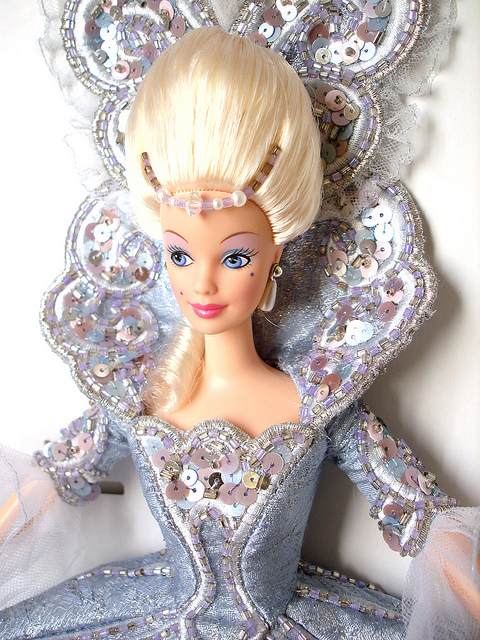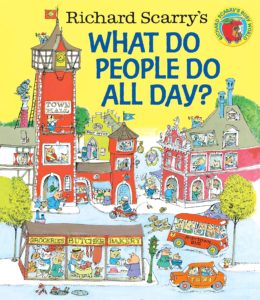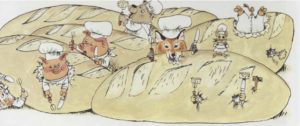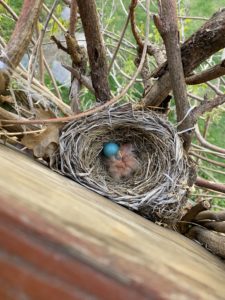Summer has flown by at Reiter’s Block HQ. The Young Master is in wilderness camp, learning how to start fires (and hopefully put them out). I have finished a draft of the Endless Sequel! Now we are girding our loins for the likelihood of Zoom school, part 2, since the state prioritized reopening restaurants and beaches rather than beating down the virus before winter. Why can’t you all just drink vodka alone in your office, like I do? You don’t need bars to hook up. That’s why God made Grindr.
While I have the time, I’m doing get-out-the-vote activism (check out Swing Left for projects you can do from home) and participating in an anti-racist online book group with my college alumni. Last month we read Ibram X. Kendi’s Stamped From the Beginning, a masterful, bracing 600-page history of racist ideas in America. In the forthcoming September issue of The Atlantic, Kendi offers an ironically optimistic take on Trump’s presidency as a force for bringing white Americans out of denial.
He has held up a mirror to American society, and it has reflected back a grotesque image that many people had until now refused to see: an image not just of the racism still coursing through the country, but also of the reflex to deny that reality. Though it was hardly his intention, no president has caused more Americans to stop denying the existence of racism than Donald Trump.
Similar to the 1850s, when a critical mass of Americans finally recognized the evils of slavery, Kendi thinks we’re at a moment of opportunity to acknowledge and strike down modern manifestations of racism: police violence, mass incarceration, voter suppression, and economic inequality. To keep the momentum alive, however, we have to remember that the rot pre-dates Trump and will not simply be solved by defeating him in November.
At the Disability Visibility Project, Stella Akua Mensah and Stefanie Lyn Kaufman-Mthimkulu wrote in July that “Abolition Must Include Psychiatry”. While I have my doubts about the either-or framing, I agree it’s important to question the assumption that the mental health system is always a humane alternative to jail.
[B]oth prisons and psychiatric institutions: have an overrepresentation of BIPOC (Black, Indigenous, and people of color), disregard the rights and safety of TGNC (trans and gender non-conforming) folks, use law enforcement transport/response, use solitary confinement and seclusion in cells/“rooms”, forcibly medicate folks (also known as chemical restraints), use physical restraints, offer extremely limited access to sunlight, fresh air, cell phones, news/media, and the outside world. In addition, sexual violence is routine, there is limited power to appeal legal/medical decisions, and the overwhelming majority of inmates are survivors of previous traumatic experiences. This year, the UN Special Rapporteur on Torture presented a report asserting that involuntary psychiatric interventions “may well amount to torture.”
Prison culture is not solvable by ‘funding the mental health system’ more robustly. The mental ‘health’ system is fundamentally carceral, meaning that it is one of the many kindred systems that function to contain and surveil people, take away their locus of control, isolate them from their communities, and limit their freedom. As it functions in America and in all places touched by colonialism, psychiatry is rooted in torture, white supremacy, and a culture of shame and punishment.
Some articles about writers’ mental health seemed worth sharing this month. Found via the supreme advice blog Captain Awkward, Paul Graham’s essay “How to Do What You Love” challenges the way that kids are traditionally brought up to think about work versus play. The usual belief is: school is boring because grown-up work will be boring, and you do boring work to earn fun time later. Graham observes:
What a recipe for alienation. By the time they reach an age to think about what they’d like to do, most kids have been thoroughly misled about the idea of loving one’s work. School has trained them to regard work as an unpleasant duty. Having a job is said to be even more onerous than schoolwork. And yet all the adults claim to like what they do. You can’t blame kids for thinking “I am not like these people; I am not suited to this world.”
Actually they’ve been told three lies: the stuff they’ve been taught to regard as work in school is not real work; grownup work is not (necessarily) worse than schoolwork; and many of the adults around them are lying when they say they like what they do.
The most dangerous liars can be the kids’ own parents. If you take a boring job to give your family a high standard of living, as so many people do, you risk infecting your kids with the idea that work is boring. Maybe it would be better for kids in this one case if parents were not so unselfish. A parent who set an example of loving their work might help their kids more than an expensive house…
…If you think something’s supposed to hurt, you’re less likely to notice if you’re doing it wrong.
…The rule about doing what you love assumes a certain length of time. It doesn’t mean, do what will make you happiest this second, but what will make you happiest over some longer period, like a week or a month.
Unproductive pleasures pall eventually. After a while you get tired of lying on the beach. If you want to stay happy, you have to do something.
As a lower bound, you have to like your work more than any unproductive pleasure. You have to like what you do enough that the concept of “spare time” seems mistaken. Which is not to say you have to spend all your time working. You can only work so much before you get tired and start to screw up. Then you want to do something else—even something mindless. But you don’t regard this time as the prize and the time you spend working as the pain you endure to earn it.
Related to that, Lindsay King-Miller (author of Ask a Queer Chick) writes at Electric Literature that “Writing Doesn’t Need to Hurt”. (Hat tip to Jess Zimmerman on Twitter for the link.) Discussing her writer’s block while working on a bereavement memoir, King-Miller tells us not to force ourselves to dwell on trauma; it isn’t the only way to produce authentic and important work. She eventually wrote herself out of a dark place, not by endlessly dissecting her grief, but by generating tons of happy-endings fanfiction for her own enjoyment.
I’m not unique in writing past the point of comfort or safety. The archetype of the suffering artist is centuries old, a cultural memory that long predates my own idiosyncrasies. Writers are encouraged, tacitly and explicitly—no, fuck that passive voice. Writers encourage each other to steer into the pain. We value “raw” and “searing” prose, venerate brutal honesty. We say “write what scares you” but seldom “write what makes you happy.” There is so much advice about “bleeding on the page” and “cutting deeper” and, if you follow those instructions, you can end up a mess of open veins and damaged tissues.
“Writing this book almost killed me,” a writer I admire tweeted recently about her new memoir, and maybe she didn’t mean it as a point of pride, but I’m certain I wasn’t the only one who read it that way. When I was a slam poet, I watched over and over as people I loved delved into their most painful moments, live and onstage, reliving trauma with their whole bodies for the sake of a compelling performance. In some creative circles, the willingness to push oneself to the edge of a breakdown is considered vital to producing great art.
It’s not a surprise, then, that so many writers seem to hate writing—if “writing” is synonymous with “chewing open old wounds.”
…It is brave to write the thing you need to write, even if it hurts. But that doesn’t mean that the hardest writing is always the bravest. Self-flagellation for its own sake is not noble—and it doesn’t necessarily make for good art.
My guiding spirit, as I plan my next project, is Diane Nguyen from “BoJack Horseman” season 6. Unable to start writing her book of serious essays, which was meant to turn her banal family dysfunction into something productive, Diane overhears a conversation at the mall and spins it into the accidentally successful middle-grade series “Ivy Tran, Food Court Detective”.
At Medium, Kacen Callender, author of the YA transgender novel Felix Ever After, reminds us that writers are people too, even on social media. “The Humanization of Authors” notes the complexities of the power dynamic between authors and readers:
There’s an idea that authors and novelists have power and platforms, but there’s a key narrative being overlooked in the relationship between novelist and reader: authors depend on readers to buy our books for our livelihoods. There’s immediately a power dynamic placed between author and reader where we depend on pleasing the reader, many times to the point of our dehumanization. There’s also the fact that readers, bloggers, and influencers can be white, cisgender, straight, able-bodied, or any other identity with privilege, and an author can have identities with no privilege. The idea that an author automatically has more power than a reader needs to be reexamined.
There’s a culture where many readers feel entitled to an author because they pay money in exchange for an author’s work. The culture implies that the reader is entitled not only to the author’s book, but to all of the author’s being. This unhealthy balance leads to situations where authors, for example, are not allowed to set healthy boundaries. Authors are vilified if they respond directly to a reader who has tagged them in a negative review, asking that they do not tag us. Authors are expected to respond to all messages. Authors are considered bad writers for not wanting to take a reader’s feedback or criticism into consideration.
Among the ways that authors are dehumanized by the social media culture of instantaneous, on-demand reactions, says Callender, is being “forced to disclose their gender or sexual identities and/or forced to share their past traumas so that readers will stop demanding to know about their lives as proof that the author is allowed to tell a specific story.”
Playwright and screenwriter Topher Payne has rewritten the cringe-worthy classic The Giving Tree to teach kids about healthy boundaries. Take a look.
When I was a Christian, I worried a lot about what made my creative work “Christian poetry” or “Christian fiction”. (Fun fact, naming your gay butt sex novel after the hypostatic union is a good start.) Does it have to be uplifting? Didactic? Contain a Christ-like character–but if it does, will this promote the misconception that human beings are our own saviors? Is it a Christian book simply because I, a Christian, am writing it? And if the book doesn’t turn out Christian-ish, does that mean I’m not a believer? (Well, in my case, yes.) In retrospect, I think I was concerned about this because I’d just become a full-time writer and I didn’t know if I deserved that privilege.
At the ecumenical online journal Breaking Ground, Tara Isabella Burton’s piece “Toward a Christian Aesthetics: Novel-Writing in an Age of COVID” addresses this very concern. The pandemic has exposed and heightened many inequalities in America. Writers can’t avoid noticing that the leisure to practice our craft depends on the physical labor of less privileged workers.
Now, more than ever, as we make public sense of a world in which the powerless are in bondage to the powerful, and in which we are all in bondage to sin, we are called not merely to account for the ways we exercise our freedom. It is a question for aesthetics as much as for politics—insofar as we can separate them, which as good systematic theologians I motion we cannot and must not do.
The questions of whether we should write and the question of what we should write as Christians are inseparable from one another and from this wider question of the theological character of right and wrong freedom—a question that both the COVID-19 pandemic and the George Floyd protests have rendered ever more urgent.
How, in the forming of words on a page, can we exercise good creative freedom, even as we resist in both practice and product the embedded liberal notion that our individual, autonomous liberty to do, to make, to fashion, is the highest good there is?
Burton calls for a humanizing aesthetic that embraces the contingency and interconnectedness of our lives. She contrasts this with the pipe dream of unlimited personal autonomy that capitalism promises. The Christian novel will
embrace the implicit power in the authorial position by adopting not…a cynical gaze, that of the disengaged ironist, nor even the more morally palatable fury of the rightly raging prophet, but a distinctly loving one. I think that that the Christian novel can—indeed must—express anger at the world’s brokenness, and its injustice, even as it casts its attention on, and loves, the tiny details, the anecdotes, the phrases, the moments, that make each of its characters, in being fully human, fully loved by God. To zero in on a character’s foibles, their mistakes, their wickedness, their self-deception—and show us why we should love them anyway—is the greatest task of Christian art…
…And, most importantly of all, the Christian would preserve in every character depicted, however briefly mentioned, the sense that they are made in the imago Dei: that they are fully human, with their own wants, needs, desires, hopes, that each of they could, if only given space to tell it, be the protagonist of their own story as well.
…It is a commitment, too, to creating work where all characters, however minor, are treated with the respect of their full humanity, and where the narrative structure of the work reflects the imperfection and insufficiency of any one authorial or authoritative gaze. It is a commitment, too, to treating the world I write about with love—to seeing the incarnate Christ everywhere, even in the most broken or sinful characters; to seeing their God-given capacity to receive grace.
This actually has been my ideal from the beginning, as well. The problem is that I didn’t find it in the Bible, nor in the reactions of the most devout Christians to my art. Quite the opposite, usually.
At JStor Daily, Ed Simon writes a provocative article “In Defense of Kitsch”. He suggests that criticism of kitsch’s democratized rococo style can be traced to Protestant suspicion or snobbery about Catholic material culture. I don’t know that I buy this as a complete explanation, since American evangelicals pump out enormous amounts of sentimental tchotchkes, but I do love to read an appreciation of my favorite room at the Met, the 18th-century furniture in the Wrightsman Galleries. Mean Mommy used to make fun of my “tacky” taste for gilded furniture and porcelain shepherdesses. Well, I have a glitter-covered orchid vagina painting on my office ceiling and I’m living my best life.

“Madame du Barbie” image via Reading Treasure, a Marie Antoinette fan blog (for real!)






